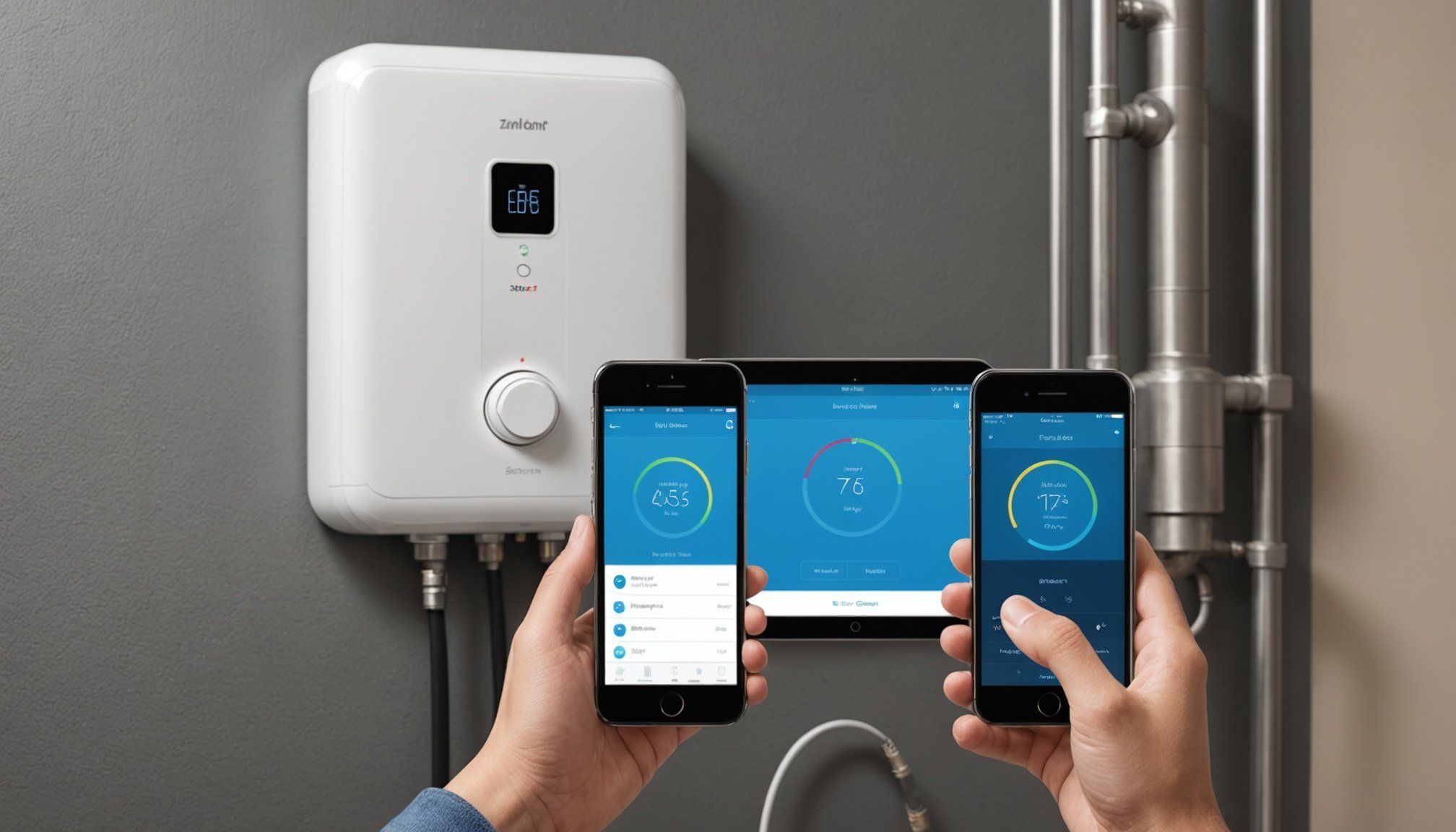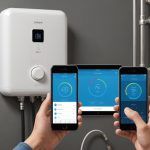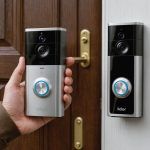Understanding Smart Water Heaters
Smart water heaters are revolutionising modern home systems, incorporating advanced technology for enhanced control and efficiency. These devices are equipped with features that allow remote control and monitoring via mobile apps, giving users unprecedented access to manage their home’s water heating systems.
At the core of smart water heater technology is connectivity, allowing for seamless integration into broader smart home systems. Key features include programmable settings and alerts for maintenance, which can be managed through a smartphone or computer. This means users can adjust temperatures, schedule heating times, and even receive notifications about energy usage and system health, all while away from home.
Also read : Transform Senior Care with Innovative Smart Home Technology: Harness Your Smartphone as the Essential Tool
By allowing remote control, smart water heaters offer numerous advantages. They contribute to energy conservation, as users can optimise heating schedules based on their lifestyle, potentially reducing energy bills. Furthermore, these devices enhance the overall efficiency of smart home ecosystems, working in tandem with other smart devices like thermostats and lighting systems.
The integration of smart water heaters not only adds convenience but also promotes greener and more economic living by leveraging technology to address traditional inefficiencies in water heating. As homes become smarter, smart water heaters represent a key component in environmental sustainability and smart living.
Also read : Unlocking the Secrets to Smart Doorbell Setup: Your Ultimate Smartphone Guide for Easy Installation
Benefits of Smartphone Control for Water Heaters
Smartphone control revolutionises the way we interact with water heaters, offering unparalleled convenience and control. Gone are the days of manual adjustments; with intelligent apps, users can manage water heating schedules from virtually anywhere. This remote access not only enhances user experience but also plays a pivotal role in achieving energy savings. By enabling users to tailor heating schedules to their specific lifestyle needs, smartphone control optimises energy usage and reduces unnecessary waste, ultimately cutting down on utility bills.
Furthermore, offering enhanced energy efficiency, this level of control allows homeowners to monitor and adjust water temperature settings promptly. For instance, users can ensure water is heated only when necessary, such as returning from holiday, to avoid high energy consumption in their absence. This dynamic ability to adjust settings contributes to a smarter, more eco-conscious home ecosystem.
The seamless integration of smartphone control with other smart home systems, like thermostats and voice-activated assistants, further elevates the utility of these devices. Users can enjoy a cohesive and responsive smart home environment that anticipates and meets their needs with finesse, making the experience of managing home utilities not just efficient, but also notably more enjoyable.
Setup and Integration of Smart Water Heaters
Smart water heaters have transformed how we manage home water heating systems, but setting them up successfully requires careful attention to detail.
Required Equipment and Apps
Before installation, ensure you have all necessary tools and smart apps. Essential items include a reliable Wi-Fi connection and compatible installations, like plumbing tools and potentially a wire cutter. Smart apps from your water heater’s brand will be crucial for enabling remote control and monitoring functionalities.
Step-by-Step Installation Process
Begin by disconnecting the old heater and preparing the area by cleaning and ensuring appropriate spacing. Follow the manufacturer’s guide for installation; this usually involves connecting plumbing and securing the water heater in place. Wiring and connection to your smart system should be completed last. Ensure all connections are tight to prevent leaks or electrical shorts.
Integrating with Existing Smart Home Ecosystem
Smart water heaters can be seamlessly incorporated into broader smart home systems. Integration is often as simple as syncing the unit with your current smart home hub, allowing enhanced control alongside devices like smart thermostats. This makes it easy to manage smart home systems holistically, maximizing the benefits of your smart technology.
Comparing Popular Smart Water Heater Models
Navigating the world of smart water heater reviews can initially seem overwhelming. However, understanding the features of leading brands significantly aids in making informed decisions. Product comparison involves examining key functionalities, energy efficiency, and user ratings.
For instance, the Rheem Performance Platinum offers robust features like leak detection and a vacation mode, appealing for those keen on energy efficiency. It’s often rated highly for reliability. Alternatively, the A.O. Smith Signature Series provides excellent remote control capabilities through its intuitive app, making it a top choice for technology enthusiasts.
When conducting a product comparison, consider capacity. Larger families may opt for models with greater storage, like the Bosch Tronic, known for its high capacity and efficiency. In contrast, the EcoSmart ECO 11, a compact tankless model, suits smaller households or eco-conscious users focused on minimizing space and maximizing energy-saving.
Ultimately, understanding personal needs, whether it’s remote control, capacity, or added functionalities, impacts the selection. Recommendations tailored to specific user requirements are crucial for ensuring satisfaction with new smart water heaters. With advances in technology, models continue to refine and offer comprehensive solutions for varied consumer demands.
Troubleshooting Common Issues
Even the most advanced smart water heaters can sometimes face issues. Knowing how to troubleshoot effectively can save both time and money. Below are some common problems and solutions.
Problem: Connectivity Issues
Many users report connectivity challenges. This often stems from poor Wi-Fi signals or incorrect network settings. To address this, ensure your device is within range of a reliable Wi-Fi signal and check your router settings. Reconnecting the device using your smartphone control can resolve persistent disconnections.
Problem: Inconsistent Water Temperature
If water temperature fluctuates, the thermostat may be miscalibrated or defective. Adjust settings through the remote control features, ensuring they align with your usage patterns. If inconsistencies continue, professional evaluation might be necessary.
Problem: App Malfunctions
Smart apps sometimes fail to sync or function properly. Regular updates are crucial to maintain compatibility with the technology. If problems persist, try reinstalling the app and ensuring your smartphone’s OS is up to date.
Proper maintenance and timely adjustments are key to preventing issues. However, for complex problems beyond basic troubleshooting, contacting a professional is advisable to prevent further complications.
Energy Efficiency Tips for Smart Water Heaters
Smart water heaters are transforming domestic energy usage by integrating technology that promotes greater energy efficiency. Understanding how to optimise these features can lead to substantial long-term savings.
Strategies for Maximising Energy Savings
To achieve maximum efficiency, ensure that your water heater is set to the optimal temperature, typically around 49°C (120°F). This prevents unnecessary energy expenditure. Take advantage of remote control capabilities to adjust heating schedules, aligning them with occupancy patterns to avoid warming water when not needed.
Importance of Routine Maintenance and Settings Adjustments
Routine maintenance is vital. Regular flushing of the tank removes sediment buildup, improving efficiency. Monitor the system via its smartphone app, as consistent maintenance prevents minor issues from escalating into costly repairs.
Leveraging Scheduling Features for Optimal Performance
Harness the scheduling functionalities to align water heating with your lifestyle. For instance, you can program the heater to operate primarily during off-peak electricity hours, further reducing utility costs. Such smart home innovations not only refine resource use but also integrate seamlessly into broader smart home systems, supporting a holistic approach to energy conservation.
Engaging these tips effectively ensures your smart water heater operates at peak efficiency, combining technological savvy with practical household management.











